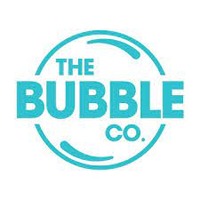The advent of blockchain technology and its associated innovations like cryptocurrencies and Non-Fungible Tokens (NFTs) has ushered in a new era in digital ownership and investment. However, for a significant portion of the population, the concept of NFTS marketing remains an enigma wrapped in digital jargon, leading to widespread bafflement and scepticism. This article explores the reasons behind the perplexity surrounding NFTs.
At its core, an NFT is a type of digital asset that represents ownership or proof of authenticity of a unique item or piece of content, leveraging blockchain technology to ensure its uniqueness and security. Unlike cryptocurrencies like Bitcoin or Ethereum, which are fungible, meaning each unit is the same as every other unit, NFTs are one-of-a-kind. This distinctiveness is akin to owning an original painting as opposed to a print; both may depict the same image, but their value and significance are vastly different.
One primary source of confusion stems from the abstract nature of what NFTs represent. In a world accustomed to physical collectibles such as artwork, stamps, or baseball cards, the notion of spending substantial sums on digital items that exist solely in virtual spaces is a challenging concept for many to grasp. The idea that a digital image, which can be easily copied and shared across the internet, could possess significant monetary value because of a blockchain entry, seems counterintuitive to traditional understandings of ownership and value.
Additionally, the technical complexity of blockchain technology, the foundation of NFTs, adds another layer of perplexity. Blockchain is a decentralised ledger that records all transactions across a network of computers. This technology ensures the uniqueness and security of NFTs but requires a basic understanding of cryptographic principles, decentralisation, and digital ledgers for full comprehension. For the average person, these are not everyday concepts, making the initial barrier to understanding and engaging with NFTs notably high.
Moreover, the world of NFTs is marked by rapid evolution and a culture steeped in internet memes, digital art, and virtual communities. For those not already immersed in digital culture or familiar with the latest trends in technology, the buzzwords and rapidly changing landscape can be disorienting. The sensational headlines about multi-million-dollar sales of NFT artwork or virtual real estate only add to the mystique and confusion, painting a picture of an inaccessible market driven by speculation and hype.
Economically, NFTs represent a shift towards valuing digital ownership and scarcity in the digital realm, akin to the value placed on physical scarcity and ownership. However, this transition challenges deeply ingrained perceptions about what constitutes value and investment. Sceptics argue that the intangible nature of digital assets makes them an unstable and speculative investment, further fuelling misunderstandings about the fundamental value proposition of NFTs.
Culturally, NFTs are at the intersection of art, technology, and finance, creating a new paradigm for creators and consumers alike. They offer artists and creators unprecedented control over their work, enabling direct sales to consumers without intermediaries and providing mechanisms for ongoing royalties. However, this new model of digital ownership and monetisation requires a shift in thinking about art, creativity, and commerce that not everyone is ready or willing to make.
Summing up, the bafflement surrounding NFTs arises from a confluence of factors: the abstract and intangible nature of digital ownership, the technical complexities of blockchain technology, the rapid pace of change in the digital and creative landscapes, and the challenge of re-evaluating long-held notions of value and investment in the context of digital assets. As the digital world continues to evolve, so too will public understanding and acceptance of NFTS marketing. Education and demystification are key to bridging the gap, making these innovative technologies more accessible and comprehensible to the wider public.

